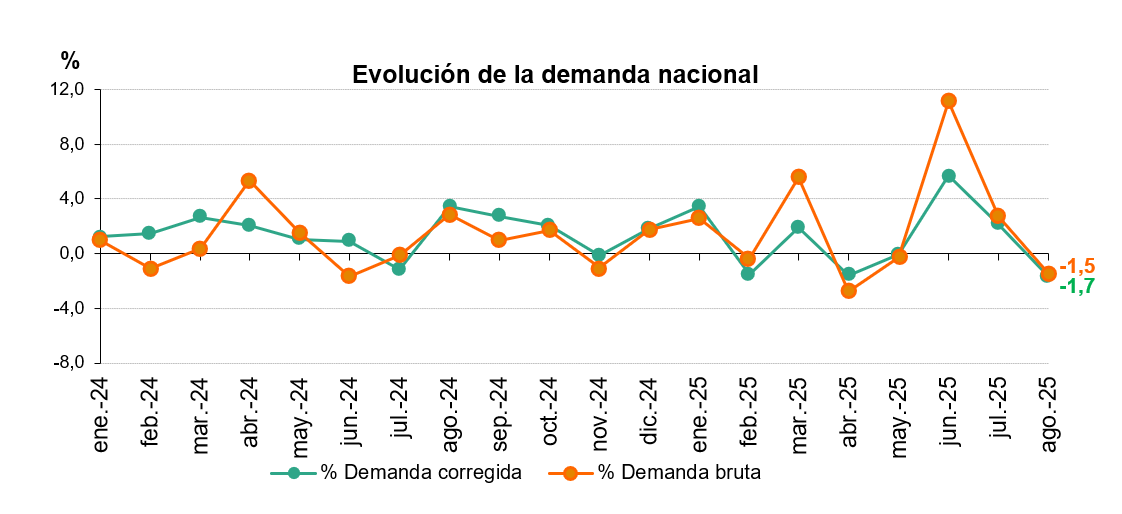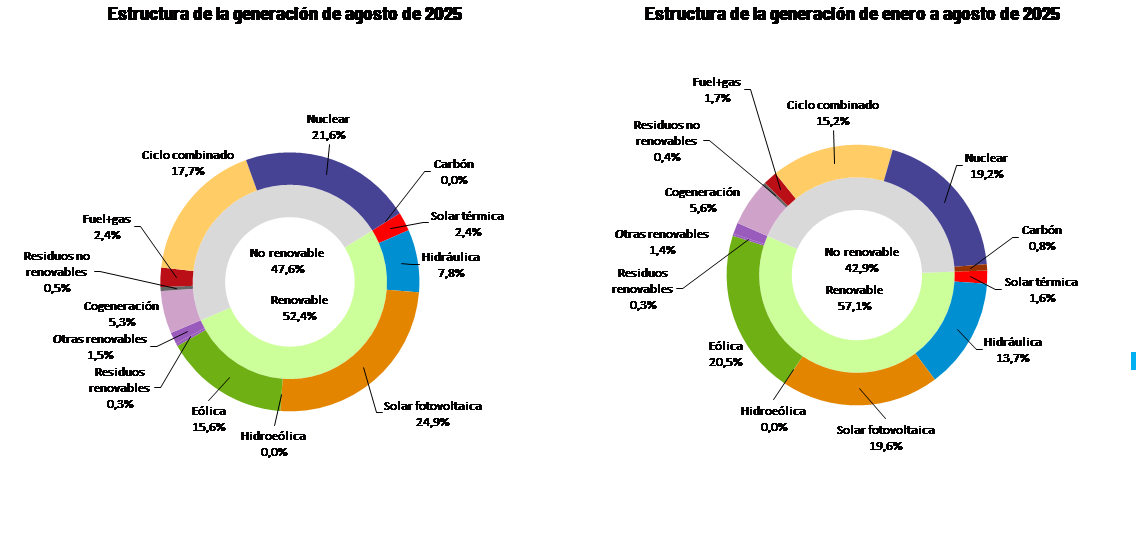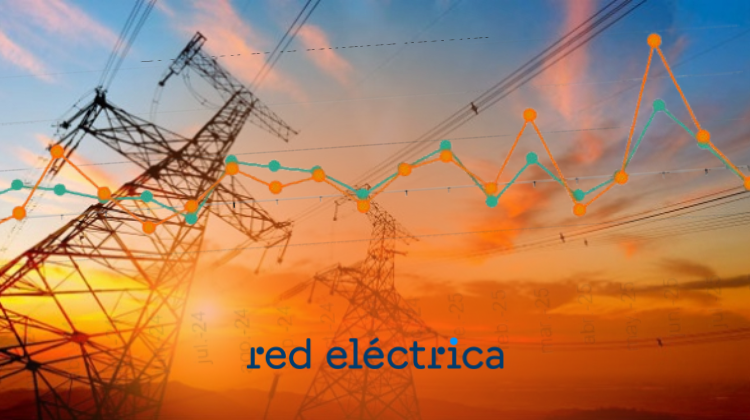National electricity demand in August fell 1.7% year-over-year, after adjusting for temperature and working conditions. In gross terms, demand is estimated at 22,128 GWh, 1.5% lower than in August 2024.


In the first eight months of the year, Spain recorded a cumulative demand of 170,653 GWh, 2.1% more than the same period in 2024. Once again, once calendar and temperature effects are taken into account, demand is up 1.1% compared to the same period last year.
Regarding the share of different technologies, renewables generated 0.7% more in August than in the same month in 2024, with 12,318 GWh, representing a 52.4% share of total production, according to data available today. Furthermore, 74.1% of the month’s electricity production came from technologies that do not emit CO2 equivalent.
Specifically, solar photovoltaic energy was the leading source of generation in the eighth month of the year, with a production of 5,847 GWh—an 8.5% increase over the same period last year—and a 24.9% share of the generation structure. This was followed by nuclear energy (21.6%), combined cycle energy (17.7%), and wind energy (15.6%).
Hydropower, for its part, has increased its production by 1.6% compared to August 2024, reaching 1,839 GWh, representing 7.8% of the total in our country.

In August, storage technologies enabled the integration of 877 GWh into the Spanish electricity system, thus optimizing greater use of energy generated through renewable technologies. In addition, 949 GWh are planned for export to our neighboring countries.
The electrical system in the Balearic and Canary Islands
In the Balearic Islands, electricity demand in August decreased by 0.6%, once the effects of working hours and temperatures were taken into account, although in gross terms, monthly demand is estimated at 735,539 MWh, 0.3% higher than the previous year.
In the cumulative figure up to the end of August 2025, 4,318,861 MWh of electricity demand was recorded in the Balearic Islands, 3.7% more than the same period last year.
In terms of production, combined cycle energy, accounting for 63.1% of the energy produced in the Balearic Islands, was the archipelago’s leading source of energy. Meanwhile, renewable energy generated in the Balearic Islands accounted for 14.2% of the total. Renewable energy production in the Balearic Islands grew by 5.2% compared to the same month last year.
Furthermore, during this month of August, the submarine link between the Peninsula and Mallorca contributed to covering 28.3% of the Balearic Islands’ electricity demand.
Meanwhile, in the Canary Islands, electricity demand increased by 3.5% compared to the same month in 2024, taking into account the effects of working hours and temperatures. In gross terms, demand was 817,589 MWh, 3.4% higher than in August 2024.
For the year to date, the Canary Islands have recorded a total demand of 5,886,177 MWh, 0.3% more than the same period last year.
Regarding electricity generation in the Canary Islands, combined cycle energy, with 44.5% of the total, was the leading source of generation in August. Renewable energy accounted for 23.5% of production, generating 192,359 MWh. Wind energy contributed 148,773 MWh this month, representing 18.2% of the total. Solar photovoltaic energy produced 43,586 MWh, representing 5.3% of the total, a 6.4% increase compared to August 2024.






























